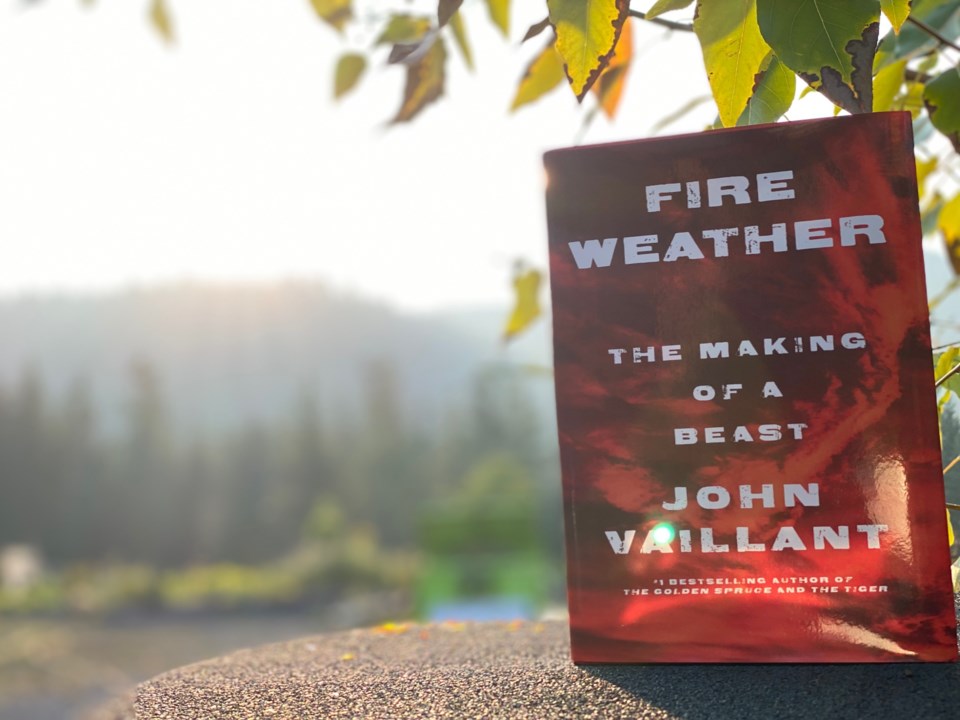To understand Canada’s apocalyptic summer of 2023 and how we got here, eschew the skimmy news reports about heart-wrenching evacuations and wildfire-impacted weddings. Likewise ignore pedantic magazine pieces summing somnolent reports from esteemed scientific agencies. The only thing you really need to read is Vancouver-based author John Vaillant’s latest book, Fire Weather: The Making of a Beast.
Not only will you grok how and why coast-to-coast fire is our new summer norm, but your head will bob in piqued agreement over how long we’ve known that carbon emissions would deliver us to precisely this point. Blunting any untoward descent into either erudition or anger, of course, is Vaillant’s evocative writing. A big-picture guy celebrated for painterly renderings of minutiae, the book is a terrific read.
Fire Weather uses the 2016 wildfire (nicknamed “the beast”) that consumed much of Fort McMurray, Alta., as a springboard to larger themes of humanity’s relationship with fire. Rich in detail and far-reaching in scope, Vaillant’s trademark blend of research, imagination and contemplation adds another superlative to the list of the Fort Mac fire’s many firsts: no book has laid bare a destructive Wildland-Urban Interface fire with the type of historical, chemical, atmospheric and human precision as Fire Weather.
Vaillant’s previous literary non-fiction efforts, The Golden Spruce and The Tiger, are acclaimed benchmarks of the genre (it’s hard to find someone who hasn’t devoured at least one of them). Fire Weather is an equal masterpiece of deep-dive aggregation and integration plumbing a past event, but additionally bears a message from the future—one which, not so unexpectedly, arrived with vengeance as the book launched in May 2023, and has yet to let up some four months later. To call Fire Weather timely would be the most egregious of understatements.
Much as in real life, the fire takes off fast in the book. And from the first scintillating sentence about its quotidian genesis you’re hooked, aware you’ll come to see things already known to you on one level in new, multifaceted detail and context. The title—referencing conditions conducive to the occurrence and behaviour of wildfire—orients you to the book’s soma, but an early epigraph from 19th-century explorer-naturalist Alexander von Humboldt signals how that body is built: “In this great chain of causes and effects, no single fact can be considered in isolation.”
Cause and effect are at the heart of Fire Weather. Noting that the histories of the petroleum industry, automobile, climate science and wildfire behaviour are currently in a state of confluence—a convergence we’re witnessing and living through—Vaillant successfully gathers these under a single roof where their interrelatedness cannot be ignored.
Of especial interest are the author’s meditations on fire—its chemical and physical nature, its there and not-quite-thereness, its natural rhythms, and how we became who we are by assuming the role of fire’s main curator and vector. If our relationship with combustion has become a necessity, Vaillant intuits its roots. “Long before we climbed down from the trees, fire was climbing up into them,” he writes.
Another major theme is the Lucretius Problem—an evolutionary defect by which humans assume the worst-case scenario that has happened is the worst-case scenario that can happen, ignoring in our planning that a worst event, by definition, has always surpassed a prior worst event, giving the climate-change-exacerbated forces behind any of today’s natural disasters advantage over those dealing with them.
Vaillant shows that what happened in Fort Mac was nature’s strongest semaphore to that date of an Earth’s surface so prone to fire that every year since has seen records set to be toppled the next, whether in size, phenomena, towns incinerated, people displaced or animals killed. Seven years later, the fire’s shock has been usurped by far worse scenarios. There is no new normal, only an open atmospheric gate through which the climate beasts under our beds—portended decades ago but kept from mind by the moneyed disinformation campaigns of oil companies—charge violently into our lives. As Vaillant sums, “This is how Earth will remember us: thanks to fire and our appetite for its boundless energy, we have evolved into a geologic event that will be measurable a million years from now.”
Leslie Anthony is a Whistler-based science/environment writer and author of The Aliens Among Us: How Invasive Species are Transforming the Planet—and Ourselves. Catch him in conversation with Vaillant at the Whistler Writers Festival on Oct. 13.
This year’s festival runs from Oct. 12 to 16.




